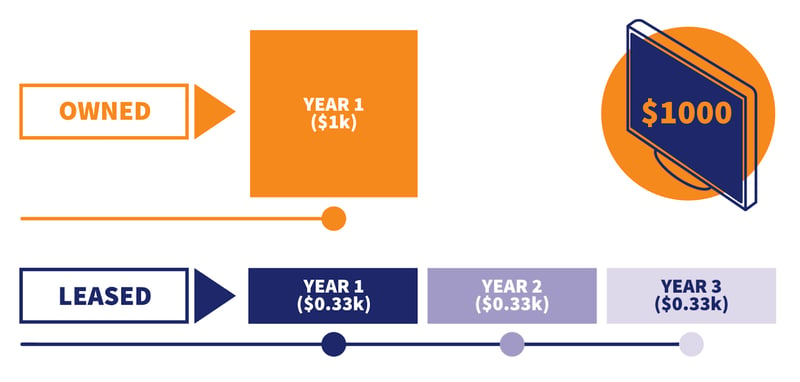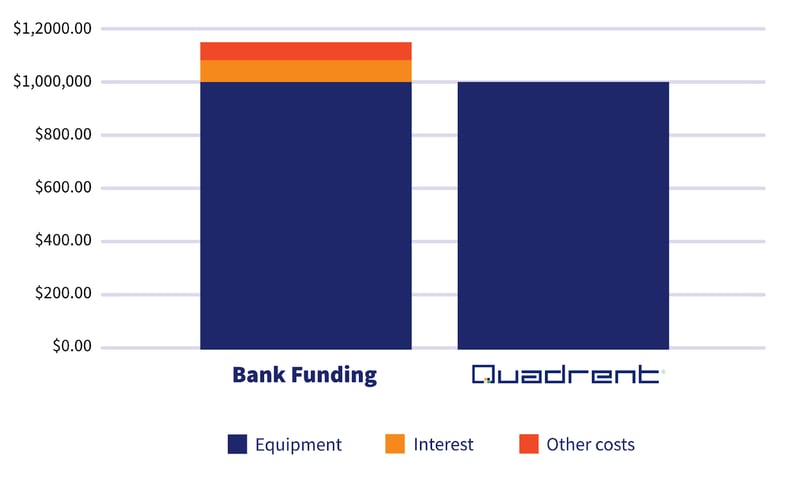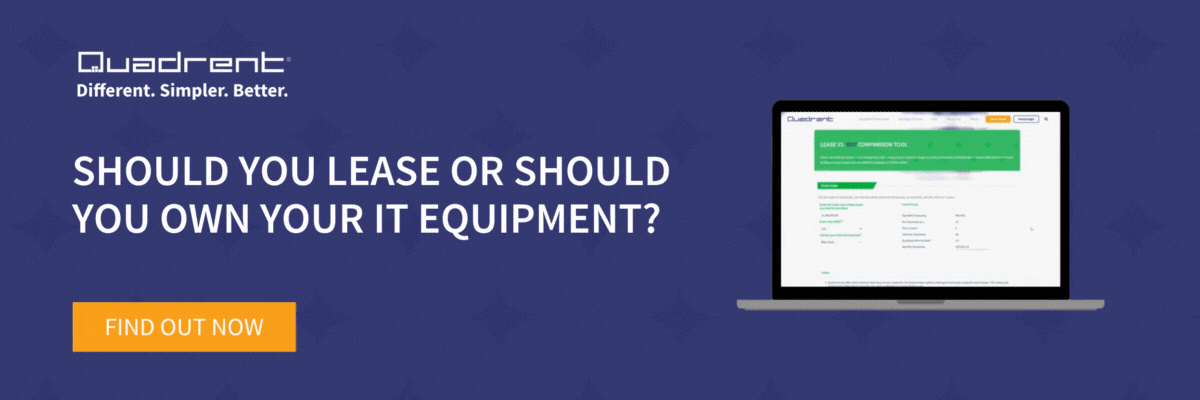Having the right equipment is critical to maintaining successful and efficient business operations. However, it also represents a high cost. Leasing has become an increasingly popular option for business asset procurement due to the wide range of benefits available.
When compared with purchasing equipment, leasing can allow you to:
- Take control of your cash flow
- Avoid end of term ownership responsibilities
- Reduce costs
- Stay up to date
- Manage your capital and debt
- Maintain flexible security over assets
In this article, we'll detail how each of these benefits could be helping your business be more successful and generate more profits.
1. Take control of cash flow
The key benefit of a lease is that you don't need to pay everything upfront. Instead, your cash flow is spread over the term of the lease. It may even be possible to structure your payments to match the cash flow benefits you expect from the asset. For example, if you're investing in a project that won't generate any income for 12 months, you may be able to delay lease payments until the end of the first year.

2. Avoid end-of-term ownership responsibilities
Leasing can help you avoid onerous end-of-term ownership responsibilities and costs, particularly around the disposal of obsolete assets per government regulations. For example, a lessor can also assist with onsite decommissioning, packaging, transportation, wiping and remarketing costs.
When a lease agreement is correctly negotiated, this responsibility should fall on the lessor, saving your business time and money.
3. Reduce costs
Operating-style leases are almost always more cost-effective than financing at corporate rates because the lessor also contributes their cash to purchase the equipment. This is an investment into the assessed market value of the asset at the end of the lease, called the 'residual position'. The lessor leverages their market partnerships and connections to realise maximum value from the investment when it is returned.
By factoring in the predicted market value of an asset by the end of the lease, the lessor can discount the cost of lease payments charged to the lessee, effectively providing interest rates of 0% or less. In this way, the lessee benefits from using the asset for the lease term for less than it would cost them to buy it outright or through a different financing solution.
Furthermore, by partnering with a specialised equipment finance lessor, organisations can engage the expertise directly and bypass additional broker costs.
Leasing and Banking Funding

4. Stay up to date
Regular replacement of older assets with the latest technology increases productivity and profitability. For example, instead of buying a server to use in your data centre for five years, you could lease the machines and get a new replacement every three years, helping maintain your competitive advantage.
Newer equipment is typically more efficient and cost-effective to run, providing tangible benefits to the bottom line. It is also more likely to align to the latest safety standards and protocols, reducing the risk to your staff's health and safety and the reputation of your business.
Newer assets can also directly positively impact team member well-being and staff retention, as your staff have the equipment they need and feel supported to do their work well.
5. Manage your capital and debt
For some businesses, equipment financing, including leasing, may be a strategic tool for proactively managing the liabilities side of the company's balance sheet. As your capital is not tied up in your equipment, you can use it to grow revenue through pursuing new opportunities, expanding operations, or making opportunistic acquisitions.
Another option is to use savings from equipment finance transactions to pay off existing debt with high interest rates or restrictive conditions, buyback outstanding shares, or secure other business-critical facilities or projects. This means you can leverage liquidity to make the most of opportunities for generating revenue.
An active equipment finance program can also broaden and diversify your funding sources, helping improve a company's market acceptance.

6. Maintain flexible security over the asset
Regarding security, a bank will typically take a GSA (General Security Agreement) over the company's assets. A GSA is a powerful document that holds security over the All Present and after-acquired Property (All PaaPs)of the company. In short, this means that the bank has a security entitlement over everything the company owns currently and into the future. Banks will also have various covenants and reporting requirements as part of finance. This entitlement makes the inherent cost to the business very hard to quantify.
By contrast, leasing companies take a PPSR security interest on the specific assets funded, ensuring you don't have the belts and braces hold of an All PaaPs charge.
Want to learn more about leasing?
Deciding whether you want to lease or buy your equipment can be a complex process; there are many elements you need to consider before you make your decision. To help, Quadrent has created an ebook detailing the benefits, risks, and potential questions you may have about leasing so that you can feel confident in making your decision.

